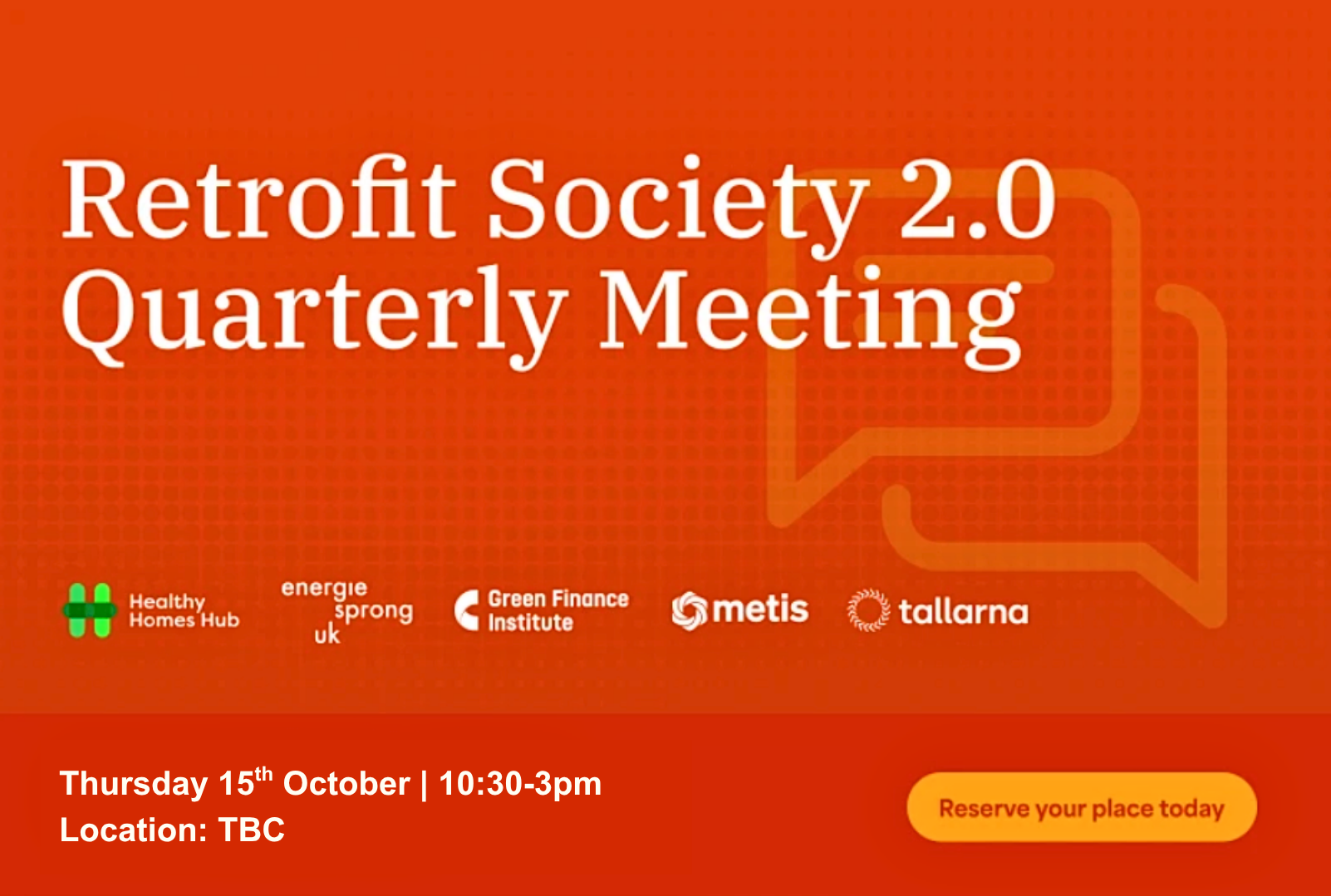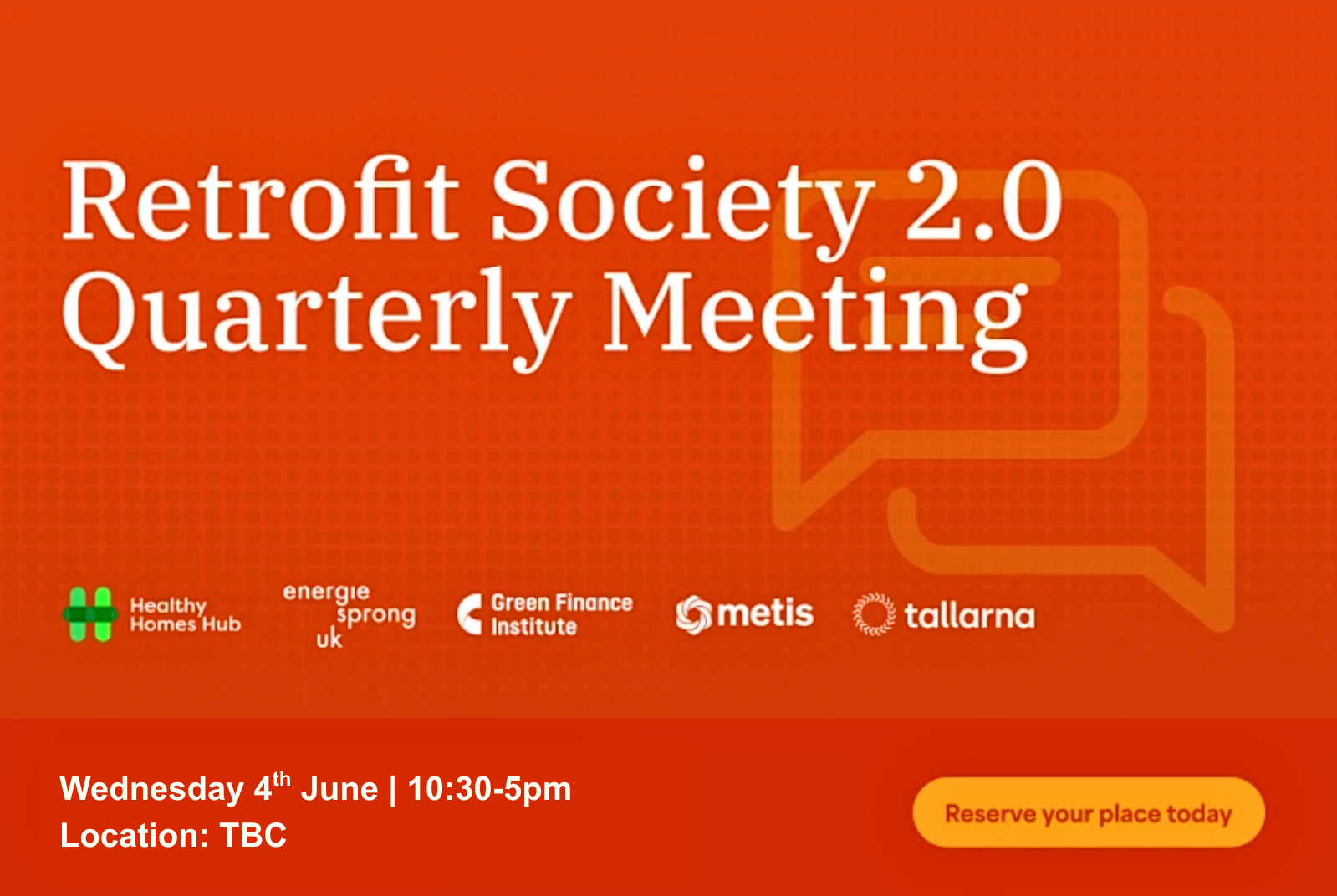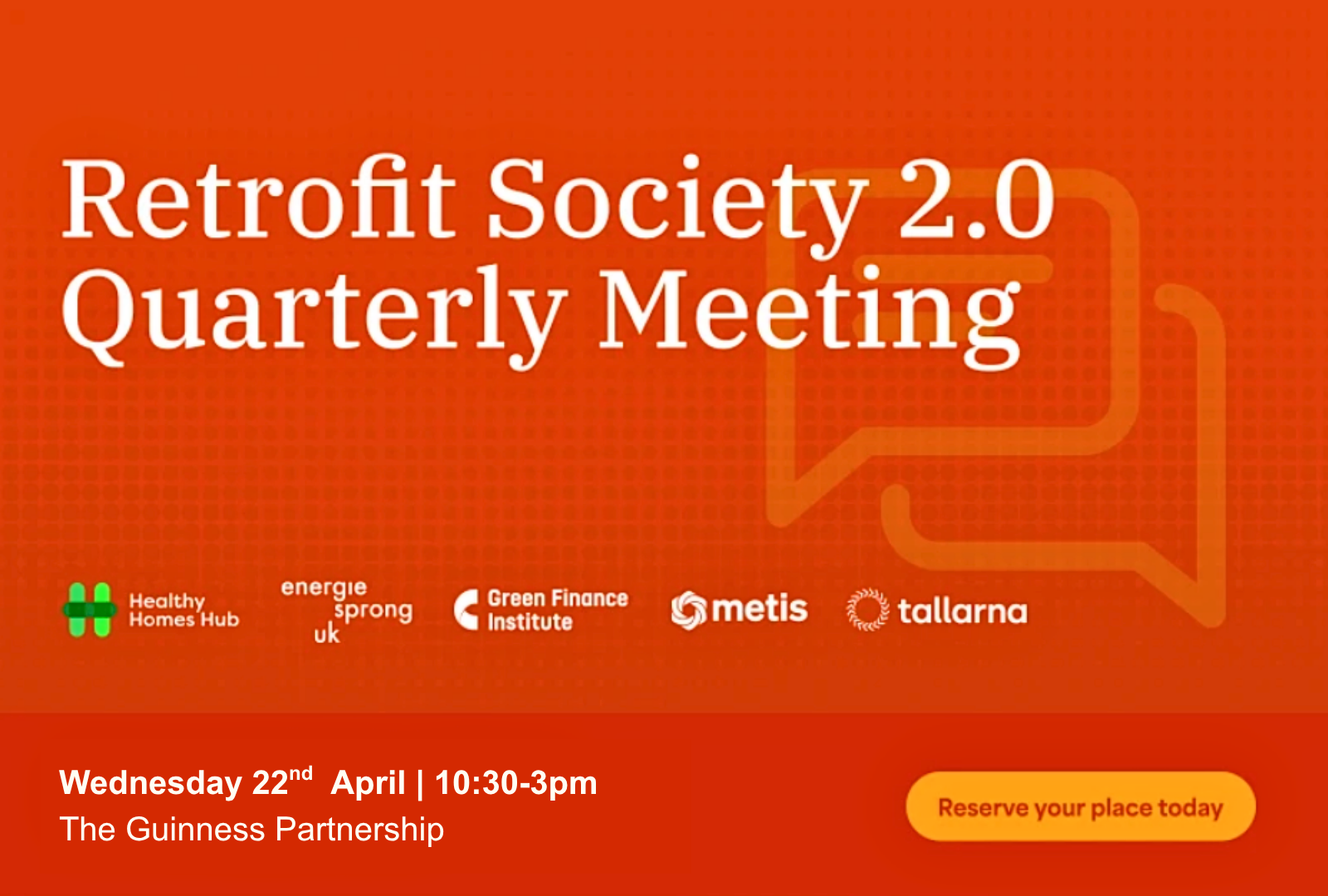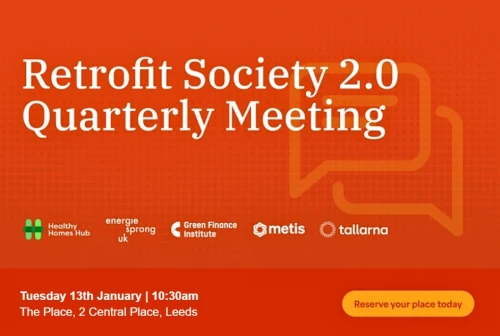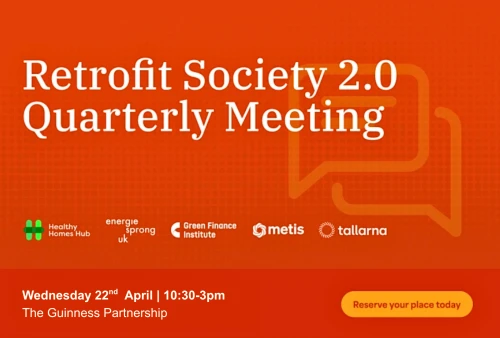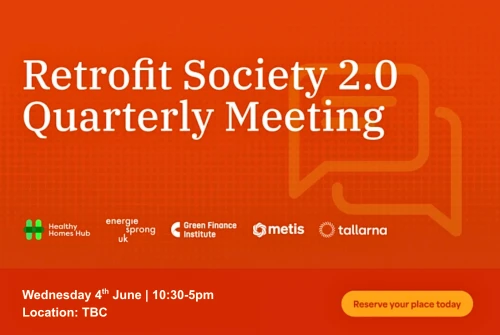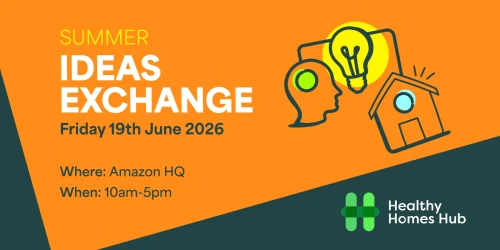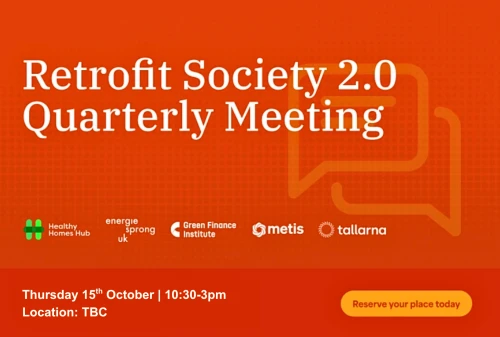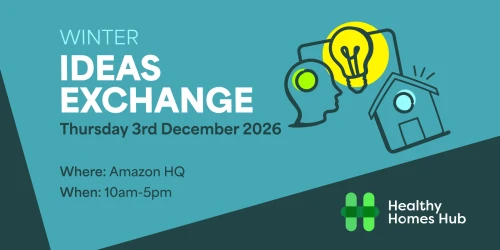RS2: Creating a Smarter, Fairer Route to Market
10/10/2025
Jenny Danson
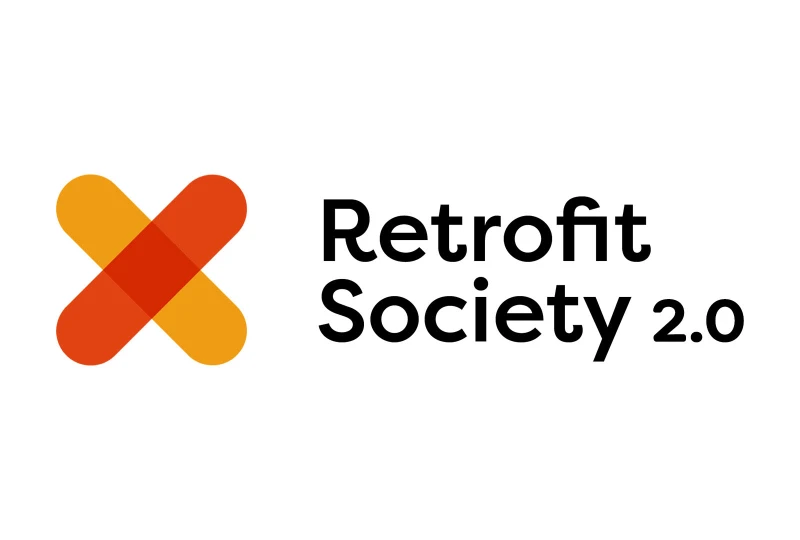
One of the biggest challenges we’ve talked about for a while now is how we procure innovation, particularly when it comes to retrofit and net zero solutions.
Procurement frameworks today simply aren’t set up for innovation. They were built to buy boilers and bricks, not to enable the creative, flexible, and outcome-focused partnerships needed to deliver net zero homes. As a result, many housing providers have had to rely on direct awards, not because they wanted to, but because there was no other realistic option.
That’s about to change.
From Frustration to Framework
Emily Braham, Energiesprong has been leading the charge on this one, with that bit-between-the-teeth energy that we love to see, and with the help of procurement expert Roger Simpson-Jones they’re shaping a smarter, more flexible approach that could transform how we buy innovative retrofit and energy solutions.
As Emily put it:
“I’m not a procurement professional, but I’ve been fishing in those waters for a while....looking at performance guarantees, long-term maintenance contracts, and the financial side of net zero retrofit. What’s become clear is that procurement needs to evolve if we want to deliver meaningful change.”
Roger, with more than 30 years of experience in public sector procurement, echoed that sentiment:
“Procurement isn’t just about buying. It’s about helping organisations deliver their goals. Too often it’s treated as a box-ticking exercise, but done right, it’s a key part of achieving better outcomes.”
Together, they’re working on a new framework with Clarion Housing Group, designed to make procurement of net zero and performance-based retrofit simpler, smarter, and fairer, for both housing providers and suppliers.
Why We Need a New Approach
The landscape for net zero retrofit is complex. Every supplier seems to have a slightly different model; and that’s a good thing. Innovation thrives on variety. But when every social housing provider has to go through its own bespoke, high-risk procurement process, it slows everything down.
For organisations like Clarion, Camden, and Enfield Council, all leaders in this space, this means months (if not years) of work just to procure the right solution. Smaller landlords simply can’t absorb that level of risk or resource.
Emily explained:
“Right now, housing providers are testing new models through direct awards because there isn’t a framework that supports innovation. That puts a huge burden on them. They’re having to take on the procurement risk, define the contract, and figure it all out themselves.”
That’s where this new framework comes in. It will:
Provide a ready-made, compliant route to market for innovative solutions.
Reduce procurement risk for housing associations and councils.
Help standardise contracts and expectations, without stifling creativity.
Build confidence among buyers and funders that contracts are robust and outcomes measurable.
Confidence, Not Complexity
Roger was clear that this isn’t just about making procurement faster. It’s about building trust.
“It’s easy to be dazzled by shiny new tech. But what really matters is whether your contract gives you confidence. Whether it’s strong enough to protect you if things don’t go as planned. We need contracts that balance risk properly, support innovation, and make it easier to say yes.”
Getting that right means bringing together procurement, finance, and operational teams early in the process. It’s about understanding what data is needed to make confident decisions, how risks can be fairly shared, and how to ensure suppliers are supported to deliver — not tripped up by red tape.
Designing a Framework That Works
The proposed framework is being developed in partnership with Clarion and a range of sector experts, and it’s intended to go live in March 2026 (subject to final approvals).
Here’s what makes it different:
It’s open. The framework will reopen periodically, allowing new suppliers and innovations to join.
It’s flexible. Contracts could last 15–25 years, supporting performance-based and finance-linked models.
It’s collaborative. It’s being co-designed with housing providers, not imposed on them.
It’s futureproof. It focuses on outcomes, not inputs, so new technologies can be adopted without breaking compliance rules.
As Roger put it:
“Focus on what you’re trying to achieve. Not the exact widgets or systems you think you need today. That’s how you build flexibility in and stay compliant at the same time.”
Learning as We Go
The team recognises that the first iteration won’t be perfect, and that’s the point. The framework is being designed as a learning process.
Each use of it will generate insights that feed back into improvements, helping to refine the tender questions, evaluation methods, and contract models. The goal is continuous improvement.... a living, learning framework that grows with the sector.
“When we ran the first domestic retrofit frameworks years ago,” Roger said, “we learnt the most from the first few tenders. You see what questions don’t work, what suppliers can’t meaningfully answer, and you refine. That’s exactly what we’re planning here.”
Two pilot case studies will be used to test the framework before it’s formally launched; ensuring it’s practical, compliant, and genuinely useful for the sector.
The Bigger Picture: Collaboration Over Competition
One concern raised in the session was the number of similar initiatives happening across the UK, from Greater Manchester to the West Midlands to national schemes led by BEIS and other agencies. It’s a valid worry. Nobody wants four versions of the same framework.
Emily’s response summed it up perfectly:
“This is designed to be available to everyone. Collaboration is key. The goal is to create something that others can use, adapt, and build on, not another closed-shop framework.”
Ultimately, the aim is to open up access to innovation, giving social landlords a clear, compliant route to market and giving suppliers a fair chance to grow, learn, and prove their models.
What’s Next
The framework is on track for approval soon, with a launch target of March 2026, aligning with the new financial year.
Once live, it will:
Offer a compliant route to procure retrofit and energy-as-a-service models.
Build confidence through strong contracts and clear risk management.
Help social housing providers accelerate progress towards healthier, warmer, and more sustainable homes.
And perhaps most importantly, it will show that procurement doesn’t have to be a blocker. With the right approach, it can be an enabler.
Key Takeaways from the Session
Procurement can either hold innovation back or unlock it. We’re choosing the latter.
Confidence in contracts matters as much as innovation in design.
Collaboration between housing providers is essential to shape shared, scalable solutions.
Frameworks should evolve with learning, not freeze in time.
The goal is simple: make it easier to do the right thing, well.
Become a member to read this article and more!
Social Housing Providers, Local Government, and Academics can sign up for free to access this article and more.
Already registered? Login Here
Related Content
What Are the Benefits of Being a Member of the Healthy Homes Hub?
Industry Recognition and Networking:
Connect with a thriving network of over 350 housing organisations, including decision-makers, innovators, and leaders. Build partnerships that enhance your professional growth and create lasting business opportunities.
Showcase Your Expertise:
Demonstrate your impact by participating in exclusive case studies, webinars, and events. Highlight your contributions to creating healthier, sustainable homes, reaching a broad audience across the sector.
Influence Policy and Advocacy:
Be part of shaping housing policy through direct engagement with policymakers and advocacy efforts. Stay at the forefront of discussions driving meaningful change in the housing sector.
Access to Market Insights:
Gain access to Healthy Homes Hub’s regular newsletters, expert analysis, and resources. Stay informed about trends, regulations, and innovative practices that affect housing professionals.
Specialised Events and Workshops:
Take part in events like the Immersive Study Tours, offering hands-on learning and networking opportunities. Visit groundbreaking projects and facilities to explore real-world solutions for healthier and more sustainable homes.
Exclusive Tools and Resources:
Only members can upgrade to Housing Sage, a cutting-edge AI assistant tailored to social housing professionals. Benefit from personalised insights, regulatory guidance, and innovative ideas to enhance your operations.
Collaboration Opportunities:
Contribute to Healthy Homes Hub’s mission by sharing best practices, participating in action learning programmes like the Retrofit Society, or co-developing solutions with academic and industry leaders.

